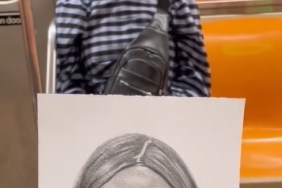1950s: Driver Frank Mundy demonstrates an early safety belt configuration from the mid-1950s that includes a full shoulder harness. Photo: RacingOne (Getty Images).
The next time you get into your car and snap that familiar seat belt into place, you should be grateful to the same people who gave us little meatballs, underarm crystals, Ingrid Bergman, Lutefisk and neutrality. If you just read that and set out to buy a thank you card for Venezuelans, please stop.
It was Sweden’s Nils Bohlin who designed for Volvo what we consider the modern seat belt — the three-point harness with the lap belt and strap crossing the chest. Sadly, it took a death in an auto accident to push the device’s creation forward. While Volvo was already the first automaker in the world to make lap belts standard issue in their cars, a relative of then-Volvo CEO Gunnar Engelau died in a crash wearing such a belt. It was clear the simple across-the-lap design wasn’t sufficient and the automaker doubled down on improving safety technology.
It’s a story well-documented in gearhead lore. Bohlin became Volvo’s first Chief Safety Engineer after serving as a designer of aviation harnesses and jet ejector seats. Putting that airborne experience to work, he introduced the three-point safety belt design in two Volvo models in 1959.
If you ask the folks over at Volvo, they’ll tell you those seat belts and their variations already saved more than 1 million lives during the last 50+ years. More importantly, Volvo honorably passed on the patent of its revolutionary safety device, allowing any other automaker to adapt the same three-point installation. It was deemed more important to save lives than for Volvo to cash-in.
Also: Safety Design | The Seven Different Types of Seat Belts
However, U.S. automakers failed to take advantage of that 1959 Swedish gift and didn’t give the three-point idea a good look until four years later. Lap belts were an offered option in American cars throughout the 1950s, but most American buyers saved money and passed. That foolish rejection of belts seems like simple pigheadedness when you consider the need to click-in had been on the collective American mind since the violent high-speed death of Hollywood legend James Dean in 1955. If the rising star had a seat belt on in his Porsche, he likely would’ve survived to star in more than just three movies.
The USA boomed in the post-war 1950s, putting more automobiles on the road coast to coast. More cars meant more traffic. More traffic equaled more collisions. More collisions tallied more deaths. So, in 1963, in legislation recognizing some casualties on public roads could be prevented with seat belt usage, Congress established federal standards in-car safety. From there, the laws rolled down the road at speed. In 1964, the U.S. Commerce Department employed a list of regulations on seat belt design and mandatory adoption, usage and testing.
Following the publication of Ralph Nader’s Unsafe at Any Speed (a 1965 consumer protection tome that leveled severe criticism at lax automaker efforts to save lives), Congress passed the National Traffic and Motor Vehicle Safety Act. The bill made seat belts mandatory in all vehicles and established the Federal Motor Vehicle Safety Standards for all vehicle components. Come 1966, President Lyndon Johnson signed two bills requiring safety belts in all passenger vehicles. In subsequent years, amendments to those laws first decreed three-point seat belts were a requirement over lap belts in the front seats — then made three-point belts for all passengers mandatory.

But, all the seat belts in the world don’t amount to much if drivers and passengers refuse to wear them. So, New York became the first state to unroll the “Click It or Ticket” mandate in 1984. In the years following that precedent, 49 states got on board. New Hampshire is the hold out as only children are required to buckle up for safety. Evidently, the Granite State is big on orphans.
Statistics on how many American lives seat belts save from year to year or overall since their introduction vary between sources. The National Highway Traffic Safety Administration reports between 11,000 and 15,000 lives are preserved every year. The Center for Disease Control calculates seat belts saved more than 255,000 people since 1975.
Regardless of the stats you pick or the car you drive, the next time you set foot in an Ikea or admire Victoria Silvstedt, be sure to nod toward Sweden and thank good old Nils for keeping your head on straight.







